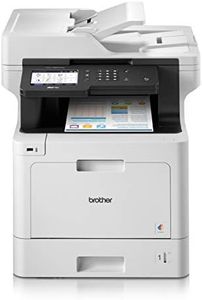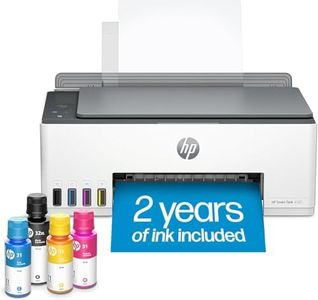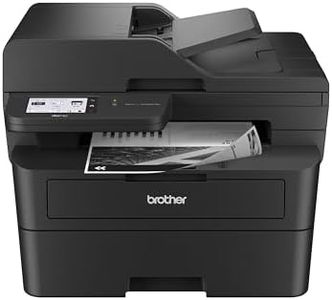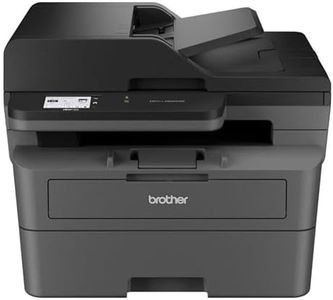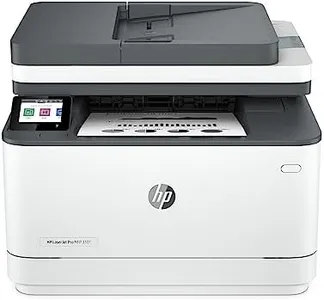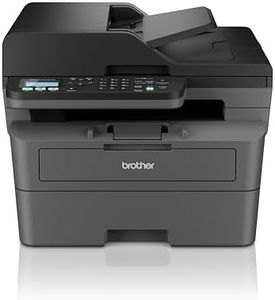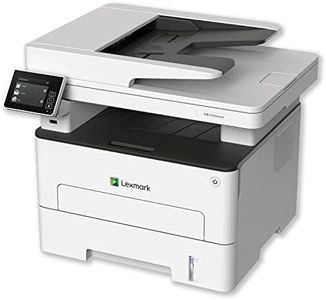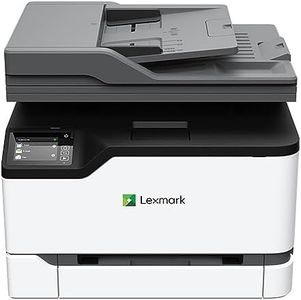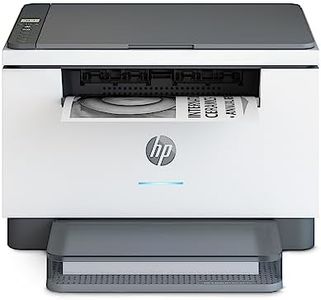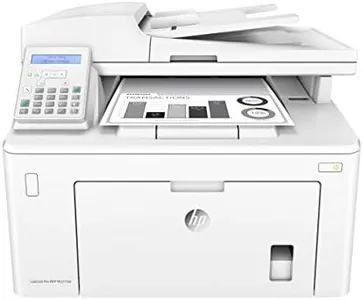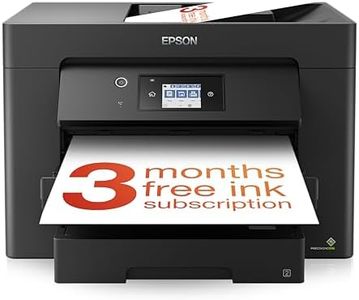We Use CookiesWe use cookies to enhance the security, performance,
functionality and for analytical and promotional activities. By continuing to browse this site you
are agreeing to our privacy policy
10 Best All In One Laser Printers
From leading brands and best sellers available on the web.Buying Guide for the Best All In One Laser Printers
Choosing an all-in-one laser printer can make a big difference in how efficiently you handle printing, scanning, copying, and sometimes faxing tasks at home or in the office. It's important to consider what you'll use the printer for the most—whether it's lots of documents, occasional forms, or high-quality graphics. By understanding a few key specifications, you can select a printer that keeps up with your needs and lasts for years.Print Speed (Pages Per Minute, PPM)Print speed tells you how many pages the printer can produce in a minute. This is important because it affects how long you have to wait for your documents. Lower speeds, usually under 20 ppm, are fine if you print only occasionally or in small amounts. Medium speeds, between 20 and 30 ppm, are good for regular home use or small offices. Higher speeds, over 30 ppm, are best if you often handle large documents or need quick turnaround. You should think about how often and how much you print; if you have frequent large print jobs, faster speeds will save you time.
Print Resolution (DPI)Print resolution is measured in dots per inch (DPI) and indicates the sharpness and clarity of your printouts. Higher DPI means more detailed printing, which can be important for graphics or documents with small text. Standard resolution around 600 x 600 DPI is enough for most text documents. If you print charts, images, or want crisp detail, look for 1200 x 1200 DPI or higher. Decide what kind of documents you’ll print most often; for simple text, lower DPI is fine, but for visuals or professional results, aim for higher DPI.
Paper Handling (Input and Output Capacity)Paper handling refers to how much paper the printer can hold at once and what kinds of paper it supports. Entry-level printers might hold around 100–150 sheets, which is okay for light use. Mid-range devices often carry 250–350 sheets, suitable for shared spaces or busy home offices. Larger capacities are aimed at heavier office use. Consider also if the printer supports things like envelopes, labels, or card stock. If you print frequently and want fewer interruptions to refill paper, pick a higher-capacity model. If you only print now and then, a lower capacity should suffice.
Scanning and Copying FeaturesAll-in-one printers offer scanning and copying, but the quality, speed, and features can vary. Key aspects include scan resolution, automatic document feeders (ADF) for scanning stacks at once, and duplex scanning for both sides of the document. If you only scan or copy a page at a time, these features may not matter as much. But if you regularly handle multi-page documents, look for an ADF and, if possible, duplex scanning. Higher scan resolution is important if you need to digitize high-detail images or graphics. Your everyday needs—like copying quick notes or archiving paperwork—should guide which features matter most.
Connectivity (USB, Wi-Fi, Network, Mobile)Connectivity describes how you send jobs to the printer. Basic models use USB cables, which are reliable for a single computer. Wi-Fi connectivity lets you print wirelessly from computers, phones, or tablets, which is convenient for homes or offices with multiple devices. Some printers also offer Ethernet for wired networks and advanced support for printing from cloud services or mobile apps. Consider where you’ll use the printer and from what devices. If you want to print easily from anywhere or share the printer, wireless options are worth having. For single-use in one place, USB may be enough.
Duplex PrintingDuplex printing means a printer can print automatically on both sides of the page, which saves paper and looks professional. Some printers require you to flip the paper manually, while others handle it for you. If you print lots of multi-page documents, double-sided printing is a handy feature that will save you time and paper. However, if you mostly print single-page documents, you may not need it.
Monthly Duty CycleThe monthly duty cycle is the maximum number of pages a printer can handle in a month without risking damage. Lighter models may be rated for 1,000 to 2,000 pages, while heavy-duty models can go above 10,000. Think of your average monthly printing volume: if you occasionally print a few documents, a lower duty cycle is adequate, but if multiple people or an office will use it heavily, choose something designed for higher use to avoid breakdowns.
Toner Cartridge YieldCartridge yield tells you how many pages you can print before needing to replace the toner. Standard-yield cartridges print fewer pages, while high-yield options last longer, meaning fewer changes. If you print a lot, high-yield cartridges are more convenient and can work out cheaper over time. For light use, standard cartridges are fine, but frequent users will benefit from the longer intervals between replacements offered by high-yield cartridges.
